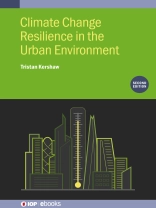Climate Change Resilience in the Urban Environment provides a detailed overview of the risks of climate change for urban areas including those risks to human health. Of particular focus is the urban microclimate and how this can be modified to make cities more efficient, more comfortable, and healthier places to live and potentially offset climate change.
This second edition provides fresh perspective to the material in the first edition, and includes additional material on green and blue infrastructure in urban areas, the influence of urban geometry on comfort, heat islands and energy usage.
Key Features:
- Provides a comprehensive review of the impacts of climate change on the urban environment.
- Provides details of measures that can be employed to alleviate the effects of climate change (increase resilience).
- Includes an easy-to-understand guide of the building physics processes and how these determine climate resilience
Jadual kandungan
Preface
Acknowledgements
Author biography
1 Climate change and its impacts
2 Decarbonisation and mitigation targets for the built environment
3 Water
4 Temperatures
5 The urban microclimate
6 Planning for urban resilience
7 Weather extremes
8 Conclusions
Mengenai Pengarang
Tristan Kershaw is currently an Associate Professor in Climate Resilience at the University of Bath. Tristan graduated from the University of Exeter in 2004 with a Master’s degree in Physics and went on to study for a Ph D in low temperature solid state physics. After completing his Ph D, he joined the Centre for Energy and the Environment also at the University of Exeter as a research fellow in climate change adaptation working on a variety of ‘building physics’ related research and consultancy projects, including the creation of probabilistic future weather years for the thermal modelling of buildings and the simulation and design adaptation of several exemplar buildings across the southwest region. Since 2014, Tristan has worked at the University of Bath in the Department of Architecture and Civil Engineering, teaching both undergraduate and postgraduate, engineers and architects on the topics of building physics, sustainability, climate change and the dynamic modelling of building designs.












